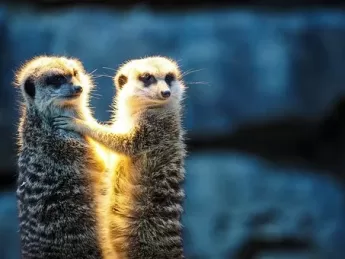Introduction
Quick Navigation
There are various celebrations, literally every day of the year, in different world countries. While some of them are joint celebrations in all countries, others are only peculiar to some countries. Nevertheless, every country has a reason for celebrating the occasion, with citizens showing active participation one way or another.
In the United States, every 3rd Friday of May, World Endangered Species Day is celebrated. It is an avenue to get to know more about plants and animals that risk going into extinction due to constant exploitation. This day, people display efforts to protect these species of plants and animals, their habitats, and any other thing that concerns them.
The History of the World Endangered Species Day
In 1973, the United States started World Endangered Species Day as a part of conservation laws for plants and animals in their habitats. Since then, some authorities have actively ensured that this conservation law is seriously the National Oceanic and Atmospheric Administration (NOAA) and the US Fish and Wildlife Service. They provide strategies to ensure that endangered species’ populations are protected so that they can recover.
How is the World Endangered Species Day Celebrated?
Every 3rd Friday of May, the Endangered Species Day is celebrated in various conservation areas, such as zoos, parks, botanical gardens, aquariums, museums, wildlife refuges, conservation groups, and schools and community centers. Some organizations contribute by planning events across the country for sensitization. Some of these events are tours, exhibitions, presentations, etc.
On that day, donations and gifts aimed at protecting endangered plants and animals are accepted. The returns from contributions are given to these conservation agencies to support national efforts to protect these creatures.
Read more on Shark Week and how it is celebrated.
What are the Different Levels of Endangerment?
According to the International Union for Conservation of Nature, there are 9 levels of endangerment. These levels are categorized based on some factors such as population size, population degree, and geographic area distribution. They include the following:
Not Evaluated (NE) – No evaluation yet based on the factors
Data Deficient (DD) – No data for assessment
Least Concern (LC) – Faces lower risk with endangerment
Near Threatened (NT) – 50:50 chance of getting endangered in the future
Vulnerable (VU) – Faces higher risk with endangerment
Endangered (EN) – Faces higher risk of extinction
Critically Endangered (CR) – Faces the highest risk of extinction
Extinct in the Wild (EW) – Only surviving in captivity or limited in a natural population
Extinct (EX) – Fully extinct and non-existent
What are the World’s Most Endangered Species?
Below is a list of the world’s most endangered species celebrated every 3rd Friday of May, every year in the United States.
Tiger
It is quite surprising that tigers are one of the most endangered species in the world today. Currently, there are less than 3,000 tigers in the wild, and if not protected closely, they could go into extinction a few years from now. Some of the factors that have caused a decline in their population are deforestation, poaching, and rising sea levels.
Pacific Walrus
A sea animal currently on the verge of extinction is the Pacific Walrus. It is mostly found at the Arctic Bering and Chukchi Seas.
This animal faces a decline in its population due to climate changes, like the Arctic ice melting. Even though it needs floating ice for resting, reproducing, and protecting against predators, it adversely affects the population.
Polar Bear
For several years, polar bears have always been one of the most endangered species of animals. In fact, it is the iconic representation of endangerment on many websites and magazines. They are the earliest victims of climate-induced population decline. However, if nothing is done in the next couple of years, there could be no polar bears walking around the arctic.
Bluefin Tuna
Another marine animal on the verge of extension is the large migratory fish, Bluefin Tuna. It is one of the most edible species of fish – mostly used in making sushi. This fish is found in the Western and Eastern Mediterranean and Atlantic Sea, making them prone to exploitation. If incessant and unsustainable fishing isn’t curbed sooner, Blue Tuna fish may become extinct quicker than expected.
Monarch Butterfly
The monarch Butterfly is another set of endangered migratory animals. They mostly migrate from North America to Mexico during winter and settle at a high-altitude pine for their survival. However, due to changes in climatic conditions, i.e., overwintering, the population of this animal suffers a decline. Efforts are being made in some parts of North America to protect the monarchs, but there is still work to be done.
Giant Panda
Another large mammal that is endangered in the wild is the Giant Panda. Even though this animal settles in the forest, there are only about 1,500 remaining, which is quite lower than it used to be many years ago. The Giant Panda has a sustainable fragmented habitat in over 20 different areas, and without efforts to establish their populations, they could suffer a worse fate.
Magellanic Penguin
One of the man-induced endangered species of animals is the Magellanic Penguins. From records, about 12 out of 17 penguin species are endangered. The constant desecration and pollution of their marine habitat with industrial waste and oil spills have caused their deaths and, ultimately, population decline.
Likewise, changes in temperature and ocean currents have also contributed to their migration from one location to another.
Other endangered organisms in the wild are Leatherback Turtle, Javan Rhinoceros, and Mountain Gorilla.
Conclusion
The importance of conservation and preservation cannot be overemphasized, as there are many animals and plants currently facing threats from the environment. These threats can cause a decline in their population, ultimately leading to extinction. However, with World Endangered Species Day celebrations, awareness can be created to protect these species for their unhindered existence in the wild– void of endangerment.

